In this latest compilation of some of the big ideas being debated in the media across the Indian sub-continent, we start with Bangladesh, where the people had to deal with a super cyclone even as they struggled to cope with the novel coronavirus pandemic. Generally speaking, Bangladesh has an excellent record with disaster management of this sort but even then managing two crises simultaneously was a challenge. In Sri Lanka, we get a sneak peek into a fascinating ‘glocal’ conversation about the power of social media and the impact that it has on democratic processes. The debate is triggered by the ongoing tussle between US president Donald Trump and Twitter; but also delves into the ramifications of Facebook’s recent admission that its platform played a role in spreading anti-Muslim violence in Digana in 2018. In Pakistan, all eyes seemed to be on the Afghan peace process which has been inching ahead, even if at a glacial pace, after President Ashraf Ghani and his rival Abdullah Abdullah ended a months-long political stalemate by signing a power sharing agreement. Finally, in Nepal, the big talk of the town was, of course, the border dispute with India. Interestingly, while politicians in Nepal have taken a rather strident tone on the matter, mainstream media has been surprisingly restrained--even going so far as to criticise the Oli government of using the dispute to distract from its own problems.
Bangladesh: A Natural Crisis amidst a Global Pandemic
This past month, Bangladesh found itself on the path of super cyclone Amphan even as it continued its fight against the Covid19. The prospect of a major environmental incident amidst a raging global pandemic was naturally a cause for concern, with the commentariat worrying if the country was at all well prepared for this extraordinary situation. On May 19, a day before the cyclone hit Bangladesh, The Daily Star wrote that while, “being prepared is crucial to prevent the loss of life”, there is now also, “the extraordinary burden of the risk of the spread of the virus. The government must therefore act extraordinarily”. It rightly noted that, “Bangladesh has a commendable track record in disaster management” but warned against complacency. The Dhaka Tribune also rang the alarm bells in time, writing that while Bangladesh was already “dealing with the coronavirus pandemic, a new and familiar threat has appeared--that of the cyclone Amphan”. The paper warned that the super cyclone due to its “sheer magnitude and scope, could absolutely devastate our coastal and char regions” and called upon the government to ensure that under no circumstance the “cyclone shelters become hotbeds for the virus to spread freely”. Thankfully, though, the cyclone did not hit the country as badly as expected. After Amphan had passed, the Daily Star noted in another editorial that, “While we have been spared the worst, the devastation done by Amphan in our coastal regions is still enormous, and massive work needs to be done to bring life back to normal in the affected areas”.
Importantly, the paper also underlined the ecological value of the Sunderbans in this situation: “We are fortunate enough to have Sundarbans stretching along our coastal districts. The 6,017 sq km mangrove forest has always been our greatest saviour in times of natural disasters like cyclones. Had the forest not absorbed the fury of Amphan, its impacts on our coastal areas would have been more severe. Since the Sundarbans has been acting like a shock absorber, economic and commercial interventions that threaten the forest's ecological balance should be stopped immediately to save this unique forest”. Post-Amphan, the Daily Star in a third editorial, highlighted the immediate challenges for the government: ensuring safe drinking water as freshwater sources had been inundated by salt water; repairing the damaged parts of the coastal embankment; and flushing out salt water from fish farms and cultivable land.
Sri Lanka: Trump, Twitter, and the Battle for Accountability
US President Donald Trump’s ongoing spat with the popular micro-blogging site Twitter has sparked an interesting conversation, in Sri Lanka, on the impact of social media platforms on democracies. After Twitter flagged the president’s messages on ballot votes as ‘confusing’, the latter issued an executive order that could take away the legal shield protecting social media platforms from liability for the content posted by their users. Without this legal shield, it would effectively be impossible for platforms like Facebook and Twitter to function; and for the public to enjoy the relatively open spaces that there are on the internet. Notably, even after President Trump issued the order, Twitter continued to flag his tweets for misinformation.
In this context, the Island wrote in its editorial that while Trump “had been using the social media megaphone, Twitter, to declare war on others until very recently... now, he has turned on Twitter itself”. The editorial advised that the president “realise that some of his tweets have also offended many” and asked Twitter why it had not removed Trump’s tweet if it violated its rules and policies.
Taking a larger picture view, the Financial Times, in a particularly thoughtful editorial, described the Trump-Twitter dispute as “a milestone in the evolution of how social media platforms are perceived and their stake in democratic exchanges of information and impact on political ecosystems”. It noted that while Trump’s executive order has been “slammed” by many as “an extraordinary attempt to regulate social media platforms and restrict democratic rights”, it has also received support from “conservatives” who believe that “social media platforms are moving away from the right to freedom of expression and increasingly restricting space for right wing and conservative views from being exchanged on these platforms”.
The editorial shines the spotlight on the evolution of “politicised ecosystems within social media” -- in part the result of political leaders like Trump and closer home Prime Minister Narendra Modi using these platforms to directly communicate with the public. The consequent phenomena such as fake news and misinformation campaign have had “serious real world consequences of anti-Muslim riots and Brexit”, the editorial argues. Hence, the editorial calls upon Twitter to also apply its policy of fact checking in Sri Lanka, especially with a crucial election around the corner.
Accountability, though, is a two way street. So, while in one editorial the Financial Times looks at how social media can and should hold political leaders to account, in another it considers how the same social media platforms--multinational technology giants in their own right--can also be held accountable. The editorial argues, “Facebook’s role in elections and spreading hate speech are often discussed as two separate problems. But in reality they are both closely interlinked and play off each other…” The editorial offers some interesting examples from Sri Lanka. For example, it notes that, “as Sri Lanka heads to Parliamentary Elections, there has been a close co-relationship between the rise of hate speech and the general political atmosphere in the country. COVID-19 has created an additional layer of spite, particularly against the Muslim community…”. The editorial also refers to the impact of memes of “military leaders being preferred to political leaders”, and argues that such content that is frequently shared on social media could in fact undermine the state in one of Asia’s oldest democracies and restrict personal liberty.
Notably, the editorial was written after Facebook accepted its role in “spreading and escalating the anti-minority or anti-Muslim violence in Digana in 2018”. The editorial noted that while Facebook and other social media giants are like “vast global empires”, the “jurisdiction to hold them accountable is strictly local”; thus, bringing us to the key question: “How can the government of a developing country even start to consider how to hold a company as large and powerful as Facebook accountable when its valuation is more than five times the GDP of that country?
Pakistan: The Kabul Deal and some Cautious Optimism
On May 17, Afghan president Ashraf Ghani and his political rival Abdullah Abdullah signed a power-sharing agreement that ended a month’s long political impasse--stemming from last year’s presidential election that both men claimed to have won. While the deal was generally welcomed by the Pakistani commentariat, there were also some legitimate concerns that it wouldn’t hold long enough. The Dawn, in its editorial, worried that Afghanistan has a long history of such political instability. It noted that “infighting amongst the Kabul elite has hobbled all efforts” and that “militia leaders, warlords and strongmen have jostled for the throne of Kabul, which has resulted in the collapse of governance in Afghanistan”. In particular, the editorial reminded readers that, “the Ashraf Ghani-Abdullah Abdullah partnership that started in 2014 ended up in acrimony”.
Nevertheless, the editorial hoped that two men would at least be able to “maintain a working relationship” so as to lead their country through the many challenges that lie ahead--including the revival of the comatose Afghan peace process and securing the country from the likes of the Islamic State. The editorial pointed out that, “Unless there is unity within the government, the Taliban will not take them seriously and the bloody battle for the control of Afghanistan will continue. And as events have shown, IS and terrorists of their ilk will gain the most from a state of chaos.”
On similar lines, the Daily Times also agreed that it was imperative for the two men to put aside their differences if the peace process was to make any real progress. The paper also noted in its editorial that while “Abdullah represents the old Northern Alliance that has an old blood feud with the Taliban”, he seems to have buried the hatchet. He is the head of the National Reconciliation High Council which is negotiating with the Taliban and, in general, leading the peace process (while Ghani is leading the presidency).
Notably, as the peace process took some baby steps forward with a prisoner exchange, the Daily Times wrote an editorial reminding Washington, DC, “not to forget the essential part that Pakistan played in bringing the Taliban to the table”. The editorial pointed out that initially the Taliban were in “no mood for a ceasefire” as “their field commanders, especially, reckoned they were winning enough land, on a fair enough time table, to win the battle on their own one way or the other.” According to the editorial, the Taliban “came to the table only after considerable effort on the part of Pakistan”. The editorial also added that, “the Americans will also have to realise, as we told Ambassador Alice Wells recently, that there is no way India will be allowed to snake its way into Afghanistan in the garb of reconstruction assistance, etc. The Afghans, the Taliban, even the Americans know that India’s sole purpose in that country, for many years now, has been ring-fencing Pakistan. And there is no way Pakistan is going to allow this charade to go on once the war is over... Simply put, India has no role to play in Afghanistan any longer”.
Nepal: Reclaiming Forgotten Territory
This past month saw Nepal’s border dispute with India come to a head. The matter had received some unpleasant attention in Nepal last year as well after India had published a new map which included the disputed Kalapani area. This time, the issue snowballed after India inaugurated a link road from Dharchula to disputed Lipulekh to facilitate trade with China and improve road connectivity for pilgrims heading towards Kailash Mansarovar. In response, the government in Kathmandu, first, publicly protested the move, and then issued a new map that, for the first time, included Kalapani, Lipulekh and Limpiyadhura--areas that Nepal had always claimed but didn’t put on its map.
As the border dispute grabbed headlines in both countries, The Kathmandu Post offered a series of well-reasoned, even stern, editorials. In the first editorial in early May, it took an almost neutral stance. Essentially, it said that “border disputes between neighbouring countries, especially ones that share an open and fluid border... are inevitable” but India should have responded to the situation better by talking it out with Nepal, instead of ignoring its concerns. Indeed, the editorial makes clear that “the issue here is not the encroachment itself” but “the dualism in India’s approach” -- India noted Nepal’s open statement of regret, but ignored Nepal’s requests for governmental talks. “This dualism shows that India is actually not willing to negotiate”, but only seeking to “bully the smaller neighbour into forgetting the issue, even as time allows it to solidify developments, and therefore its claim, on the disputed territories. This is shameful”, the editorial said. It also urged India “to realise that it needs friends in the region…” and called upon the government in Kathmandu to consider registering a “formal disagreement through the appropriate multilateral medium”.
Seemingly, the Nepal government took this advice to heart--and, on May 20, released the new map, espousing an expansive territorial claim. While criticising India for being “insincere”, the paper appreciated the government in Kathmandu for making “the boldest move it could”. However, here again, the editorial pointed out that “a dispute of any kind—whether cartographic, diplomatic or economic—is not a good prospect for either country” and urged India to “use this development to open an avenue for dialogue—something Nepal has wanted all along”.
Another interesting perspective on this issue was offered by the Nepali Times newspaper which in its editorial turned the spotlight on the policy oversights on Nepal’s side--without necessarily backtracking from Kathmandu’s claims. In fact, the editorial opens with the claim that, “Legally, treaty-wise, and under international law, the entire Limpiyadhura basin at the source of the Mahakali River is Nepali territory.”
But then it goes onto chart Nepal’s carelessness and opportunism towards the region. It notes that, “after the Mutiny of 1857, the Survey of India maps cunningly moved the border to Lipu Khola…” This, it describes, as “the original sin” -- and one that was ignored by the “distracted rulers in Kathmandu, then as now, had no idea what was going on in that far-flung edge of Nepal”. The editorial also notes that, “Nepal’s own official maps show Lipu Khola as the boundary between Nepal and India, and not the Mahakali River. Ultra-nationalists cry themselves hoarse about ‘big bully’ India, but why would a neighbour respect your boundary if you yourself never cared where it is?”
Turning the spotlight on the current political dispensation in Kathmandu, the editorial makes no bones about the fact the Oli government has been leveraging the issue to divert attention from its own problems and failings--pointing out how the prime minister’s detractors have suddenly gone quiet. Finally, the editorial also shows how the border issue has, in fact, been formally discussed, not just bilaterally, but also with China (which shares India’s view on the matter)--and yet, “Nepal’s leaders did not broach the subject during President Xi’s state visit to Kathmandu last October”. Ultimately, the editorial concludes that, “There is not much tiny Nepal can do when its two gigantic neighbours decide to snub it. But… For neighbours to take us seriously, we must have leadership with self-respect and the vision to act in the long-term national interest.”



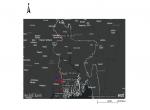
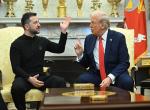

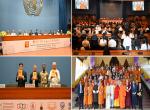
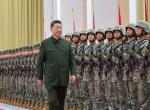
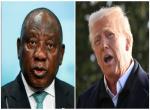

Post new comment